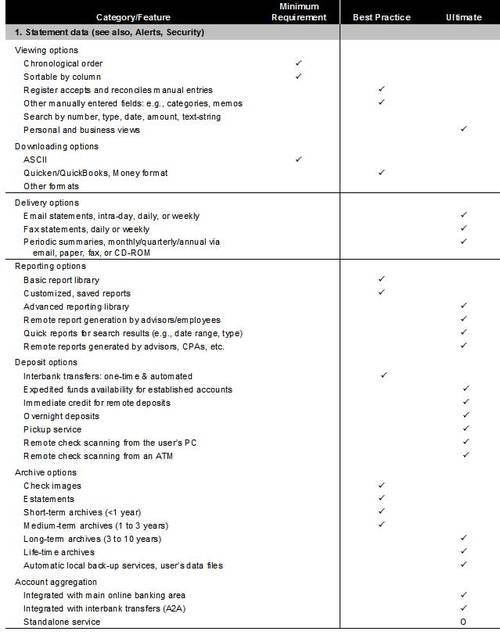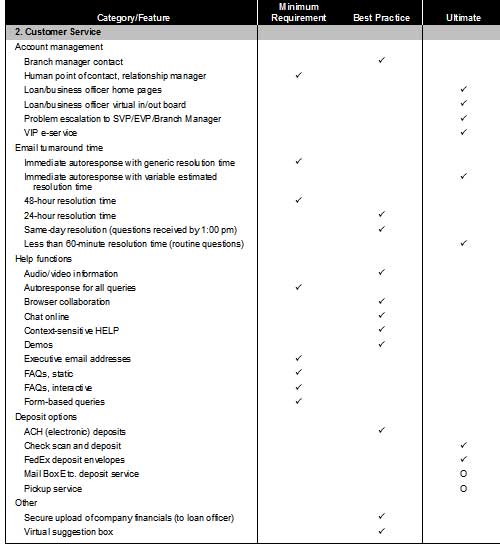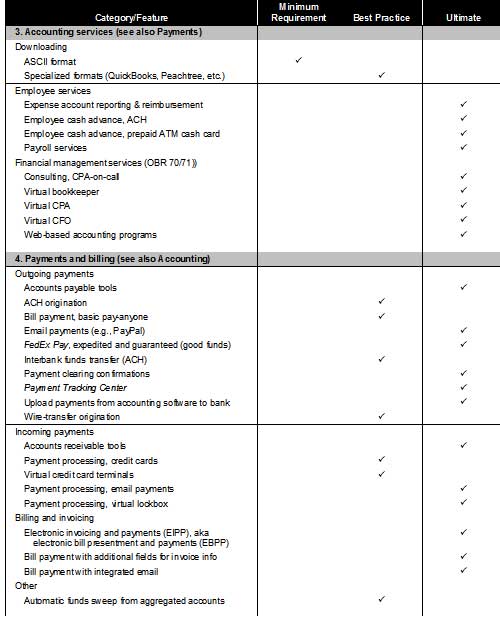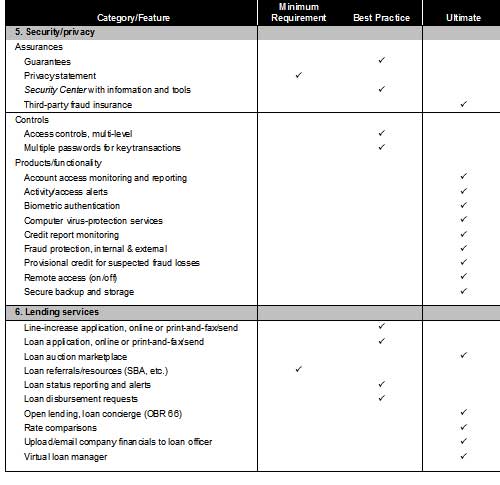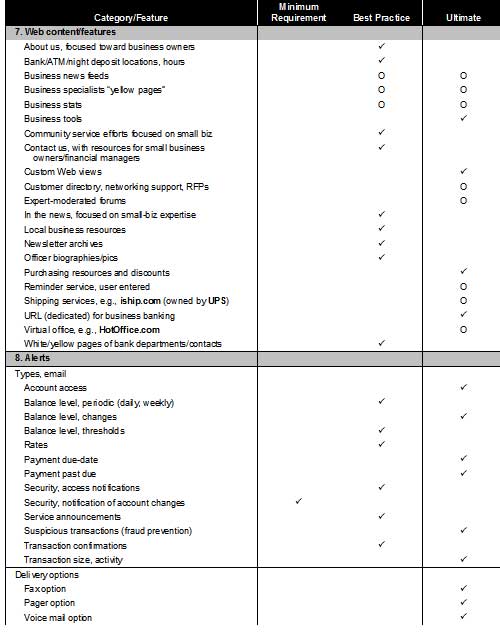In theory, small and micro businesses represent one of the most lucrative,
and relatively untapped, sources of incremental business. The reality is that
most small and even mid-size businesses are too busy to spend much time changing
banking relationships, unless they are a pre-startup1
and/or shopping for a credit line or loan. As we outlined in OBR 107/108, a
product offering optimized for business will differ somewhat from one built for
consumers. The following chart summarizes the product options for small- and
microbusinesses. See our prior report for more detail on each feature. The
options are divided into nine categories:
1. Statement data: viewing and organizing balance
2. Customer service: customer care delivered over the Internet
3. Accounting services: financial management tools
4. Payments and billing: e-checks, bill pay, email payments, ACH,
wires, invoicing, card processing
5. Security/privacy: privacy, security, permissions, guarantees
6. Lending: business tools, news, information
7. Website content/features: non-financial tools and information
8. Alerts: email, fax, telephone, and mail activity- and balance-level
alerts
phase. One of the first things an entrepreneur will do is open separate bank
account(s) for a new business venture; it helps keep records straight for
tax-reporting purposes. So it does little good to target any startup, since
most will already have business banking relationships established; you
really need a foot in the door in “pre-startup” mode, when the kernel of an
idea is just forming (see OBR 107/108, for ideas on how to target
pre-startups).
Online Services for Microbusinesses
checkmark = must have feature; R = recommended feature; O = optional feature
Source: Online Banking Report, 9/04 checkmark = must have feature; R =
recommended feature; O = optional feature

